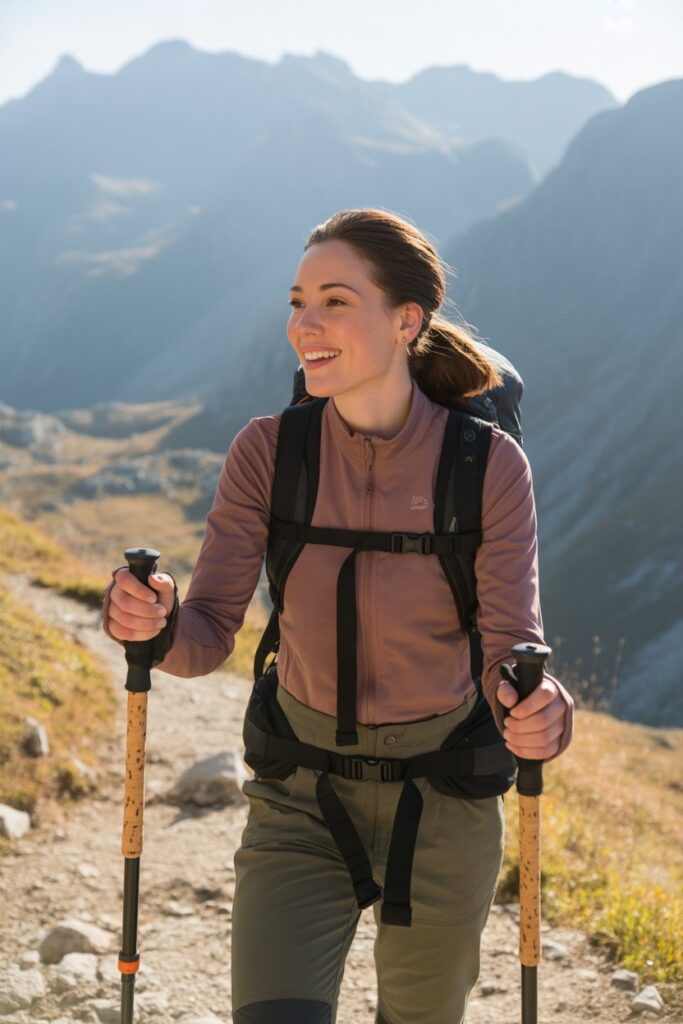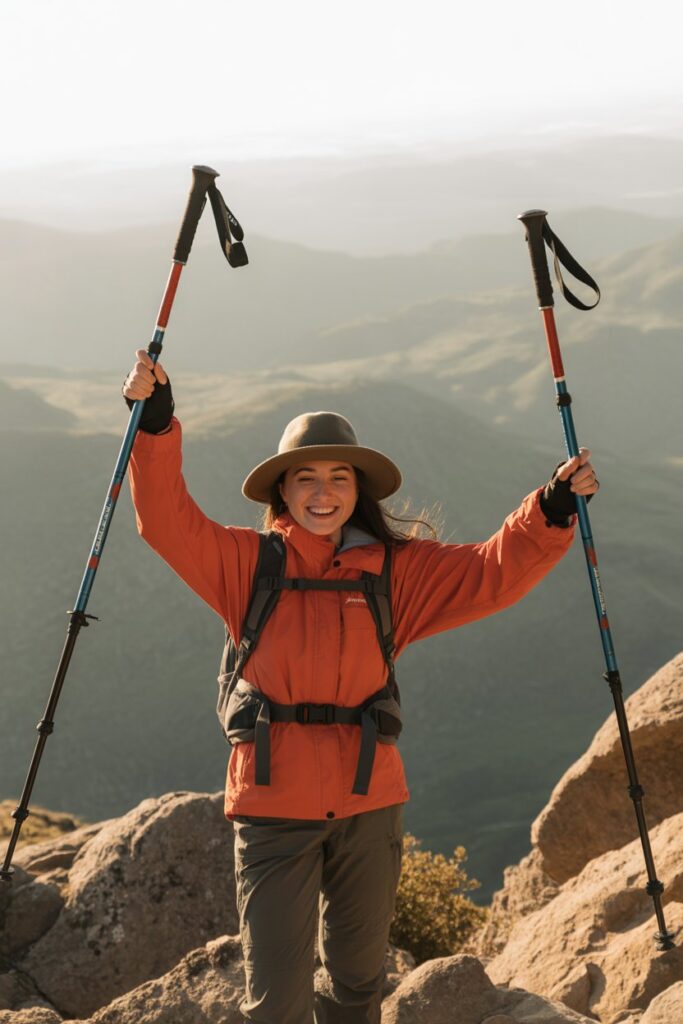Backpacking isn’t just hiking with a bigger backpack – it’s an entirely different beast. Your legs are carrying more weight. The terrain changes more often. And every ounce in your pack matters because you’re hauling it for days, not hours.
That’s why the trekking poles you choose for backpacking need to hit a sweet spot between lightweight performance and all-day durability. If a pole fails five miles from camp, you don’t just hop back to the car – you’re stuck until you fix it.
So, whether you’re heading out for a quick overnight trip or a thru-hike that will test your gear’s limits, the right poles can make the difference between “still smiling” and “limping into camp.”
Below, we’ll cover the key features to look for in backpacking-specific trekking poles, plus our top picks for 2025.
How to Choose Trekking Poles for Backpacking
Backpacking poles need to handle more than your average day hike. Here’s what to prioritize:
1. Weight-to-Durability Ratio
Yes, ultralight feels great – until you snap a pole on day three with no replacement in sight. Carbon fiber is light, but aluminum often holds up better under heavy loads and rocky terrain. Look for models that balance the two without feeling flimsy.
2. Collapsed Length & Packability
When you’re hauling a week’s worth of gear, every inch of space matters. Poles that collapse small fit better inside your pack or attach neatly to the outside without snagging on brush. Folding designs often pack smaller than telescoping ones.
3. Locking Mechanism Reliability
Multi-day trips mean hundreds of adjustments. Choose a locking system that’s fast, glove-friendly, and won’t slip after a few miles. Lever locks are quick and field-repairable, while twist locks save weight but can be slower to adjust.
4. Grip Comfort for Long Days
Your hands will spend hours holding these, so comfort is non-negotiable. Cork grips mold to your hand and handle sweat well, foam is soft and light, and rubber excels in cold or wet conditions. For backpacking, cork is often the winner.
5. All-Season Versatility
If your adventures span from summer alpine trails to snowy winter routes, pick poles with interchangeable baskets and durable carbide tips. You don’t want to buy a separate set for every season.
6. Repairability in the Field
Sometimes things break – on the trail. Choose poles with replaceable sections, tips, or straps. Carry a small repair kit or even duct tape for quick fixes.
Our Top Picks for Backpacking Trekking Poles (2025)
Here’s our shortlist of the best poles for backpacking this year, tested for comfort, durability, and long-haul performance:
1. Black Diamond Alpine Carbon Cork
- Best Overall for Backpacking
Lightweight yet sturdy carbon build with ultra-comfy cork grips. Excellent all-season versatility.
2. LEKI Black Series FX Carbon
- Best Foldable Option
Compact folding design, perfect for travelers. Strong for its weight with premium adjustability.
3. MSR DynaLock Explore
- Best for Durability
Full aluminum construction with reliable lever locks. Handles heavy loads and rough terrain.
4. Gossamer Gear LT5
- Best Ultralight Choice
Featherlight carbon build for ounce-counters. Best for experienced hikers who treat gear gently.
5. Black Diamond Pursuit
- Best for Comfort
Ergonomic cork grips, balanced weight, and smooth adjustability for all-day use.
Comparison Table – Best Backpacking Trekking Poles 2025
| Product | Weight (pair) | Material | Collapsed Length | Price (approx.) | Best For | Cons |
|---|---|---|---|---|---|---|
| Black Diamond Alpine Carbon Cork | 17 oz | Carbon Fiber | 24 in | $200 | All-season comfort | Pricey |
| LEKI Black Series FX Carbon | 16 oz | Carbon Fiber | 16 in | $230 | Compact travel | Expensive |
| MSR DynaLock Explore | 19 oz | Aluminum | 24.5 in | $120 | Durability | Heavier |
| Gossamer Gear LT5 | 9.8 oz | Carbon Fiber | 23.5 in | $195 | Ultralight | Less durable |
| Black Diamond Pursuit | 1 lb. .4 oz. | Aluminum | 24 in | $170 | Comfort | Bulkier when packed |
Backpacking Pole Maintenance & Tips
- Clean daily – Wipe mud and grit from the locking mechanisms each night.
- Dry grips – Prevent mildew or unpleasant odors by letting grips air dry before packing away.
- Carry spares – Tip protectors, an extra basket, and a small piece of duct tape can save a trip.
- Check locks regularly – A quick tension tweak can prevent mid-hike slipping.
Conclusion – Pick Once, Hike for Miles
The best trekking poles for backpacking aren’t the lightest or the cheapest – they’re the ones that will carry you through miles of changing terrain without complaint.
Choose wisely, maintain them well, and they’ll become as essential as your favorite boots.
For more on trekking pole selection, check out our guides:


